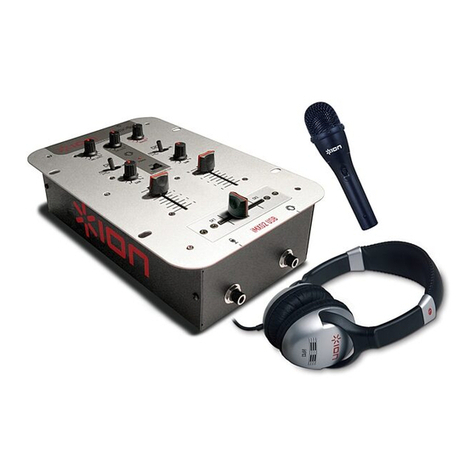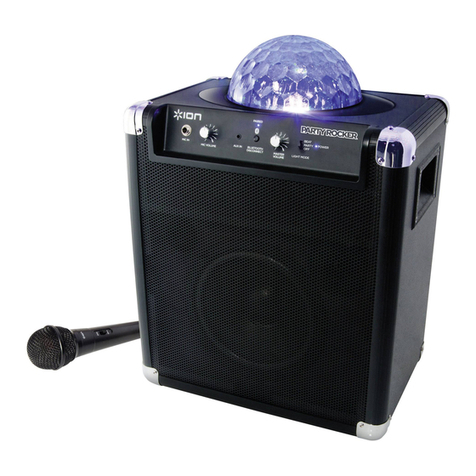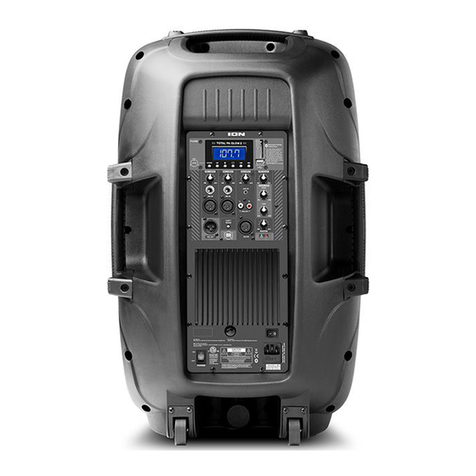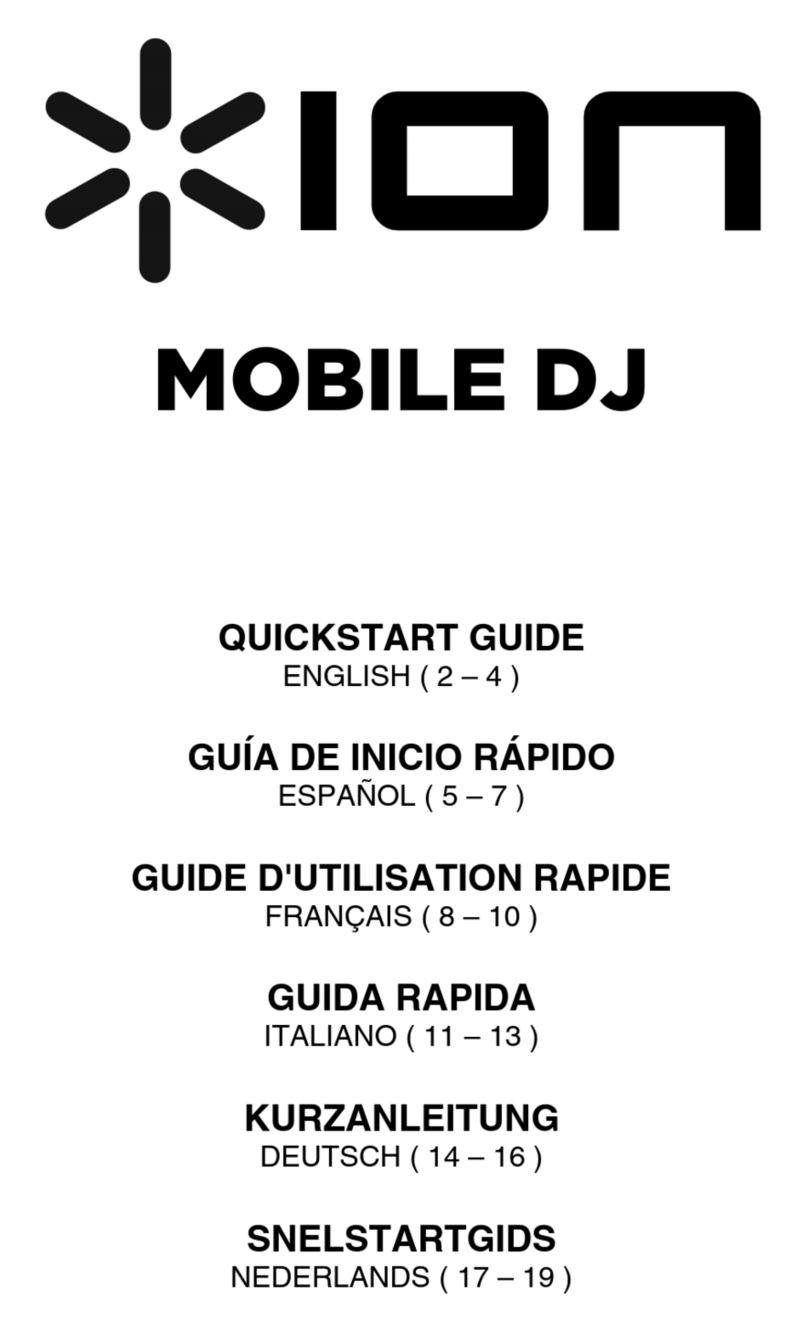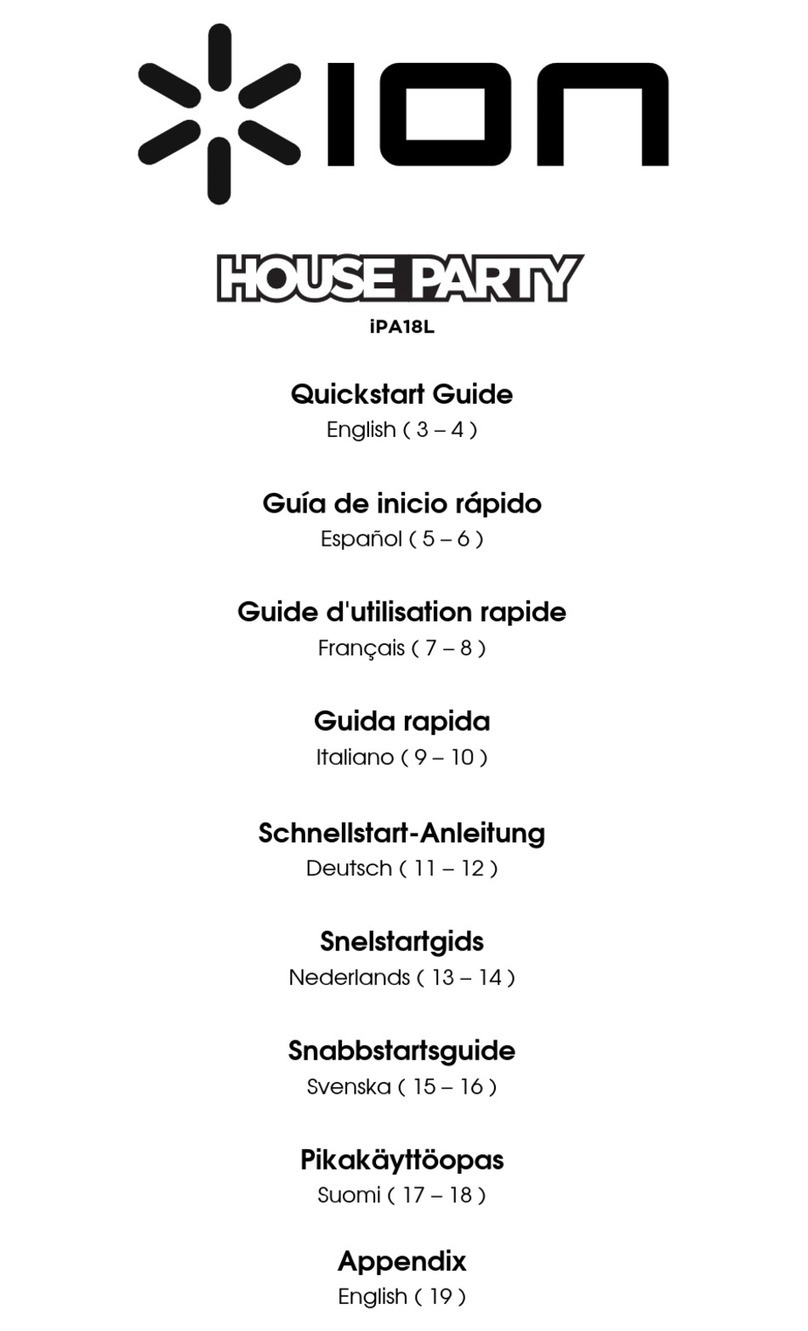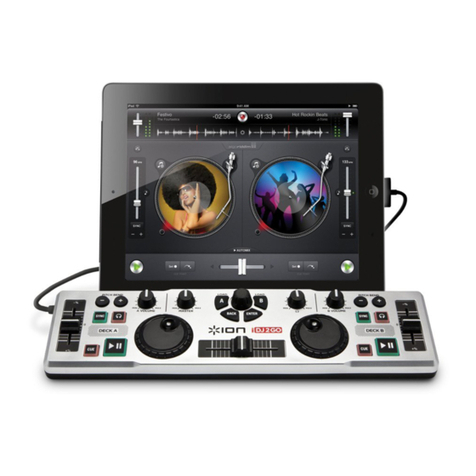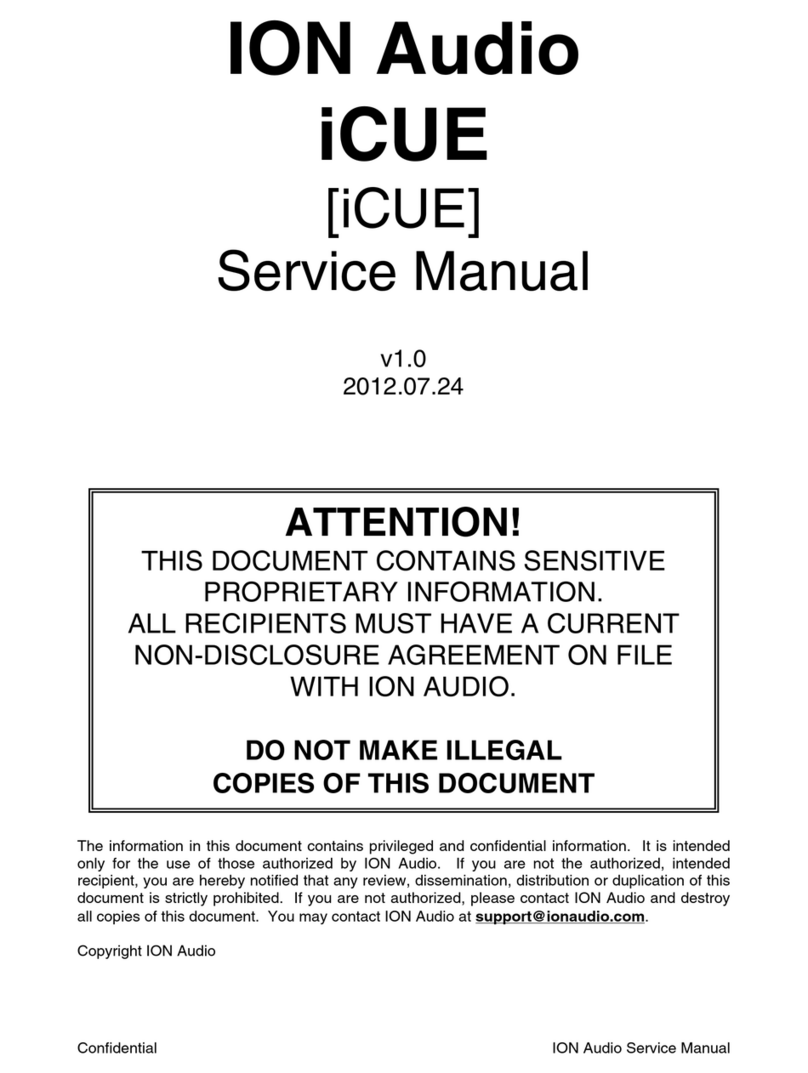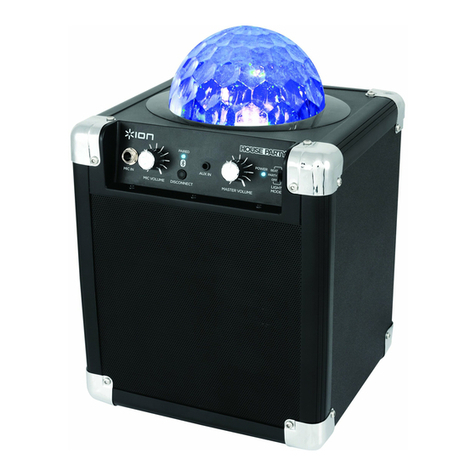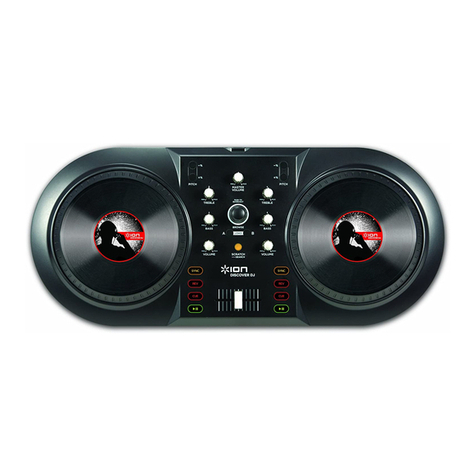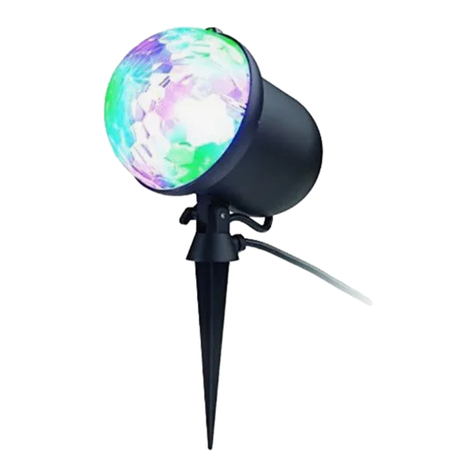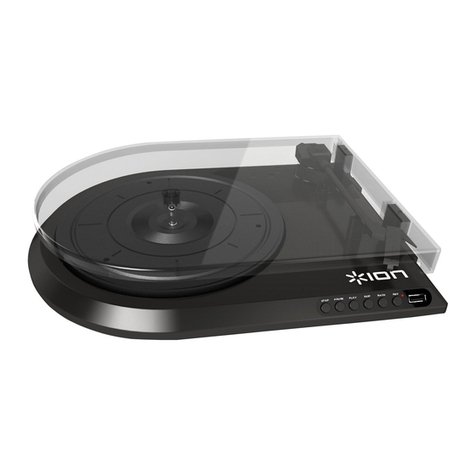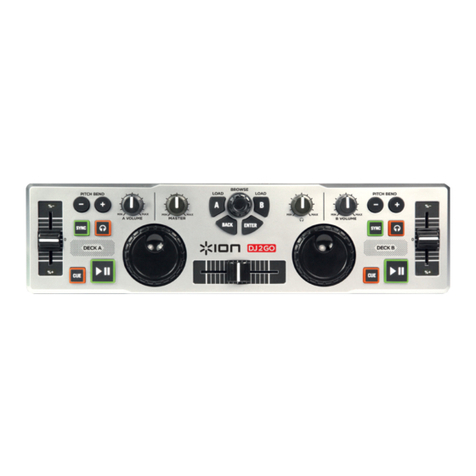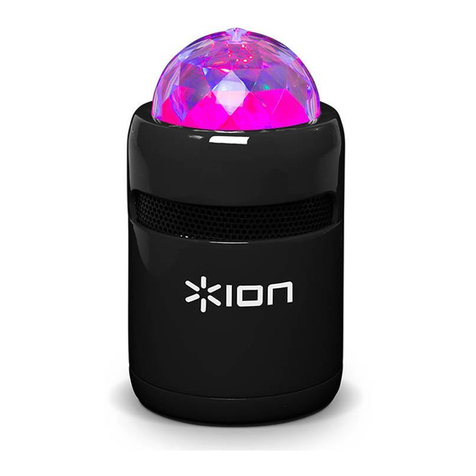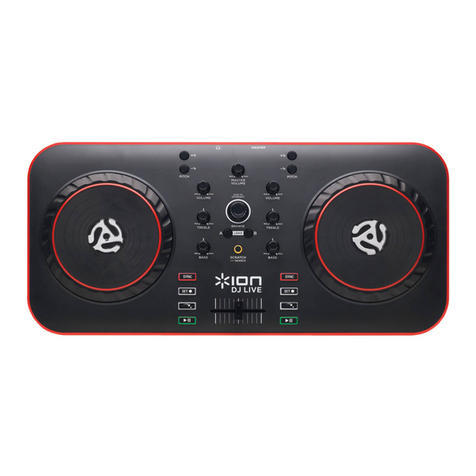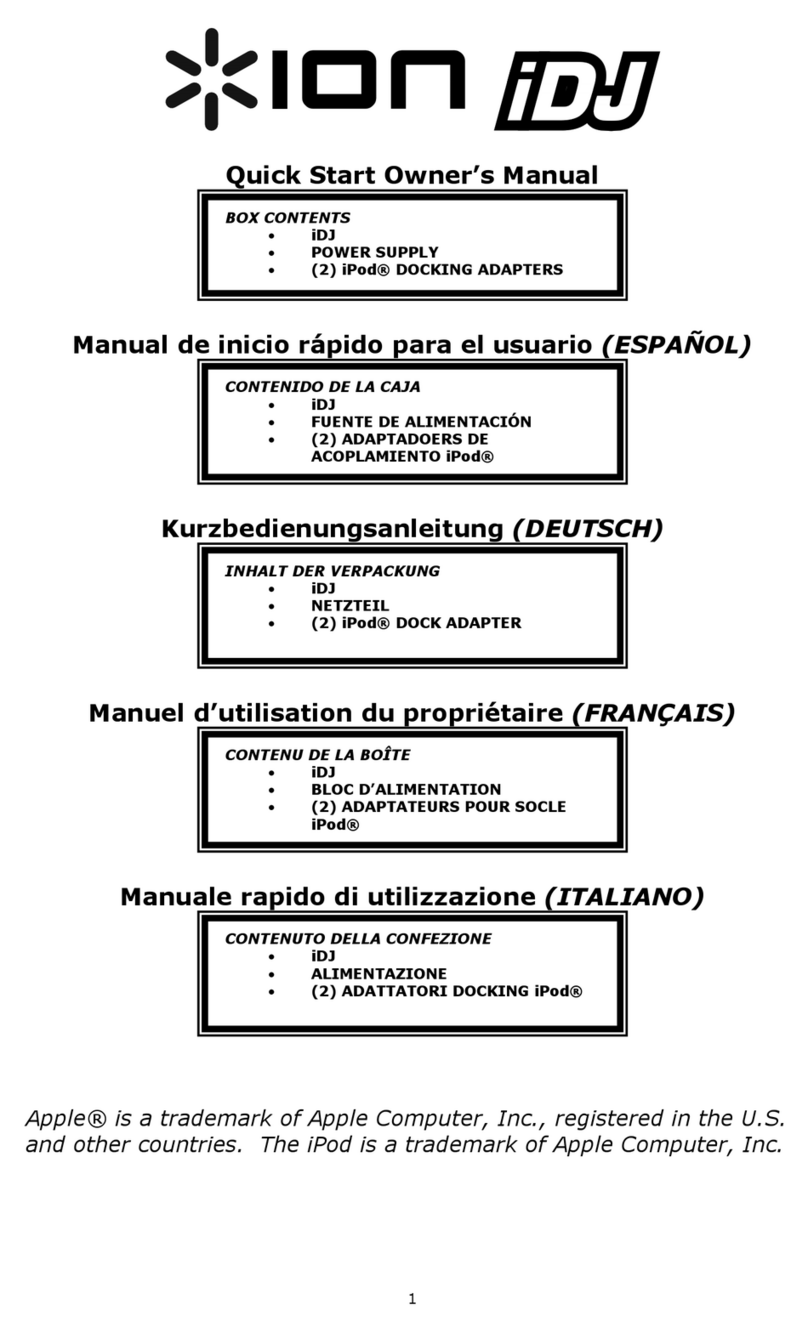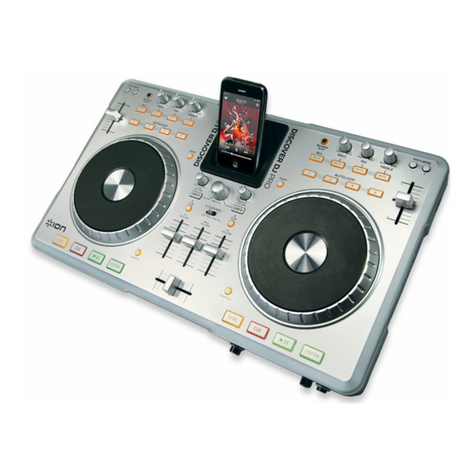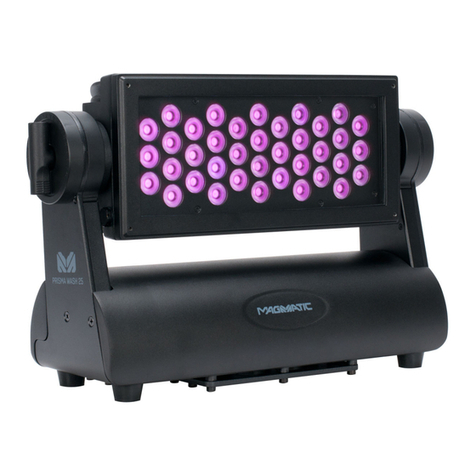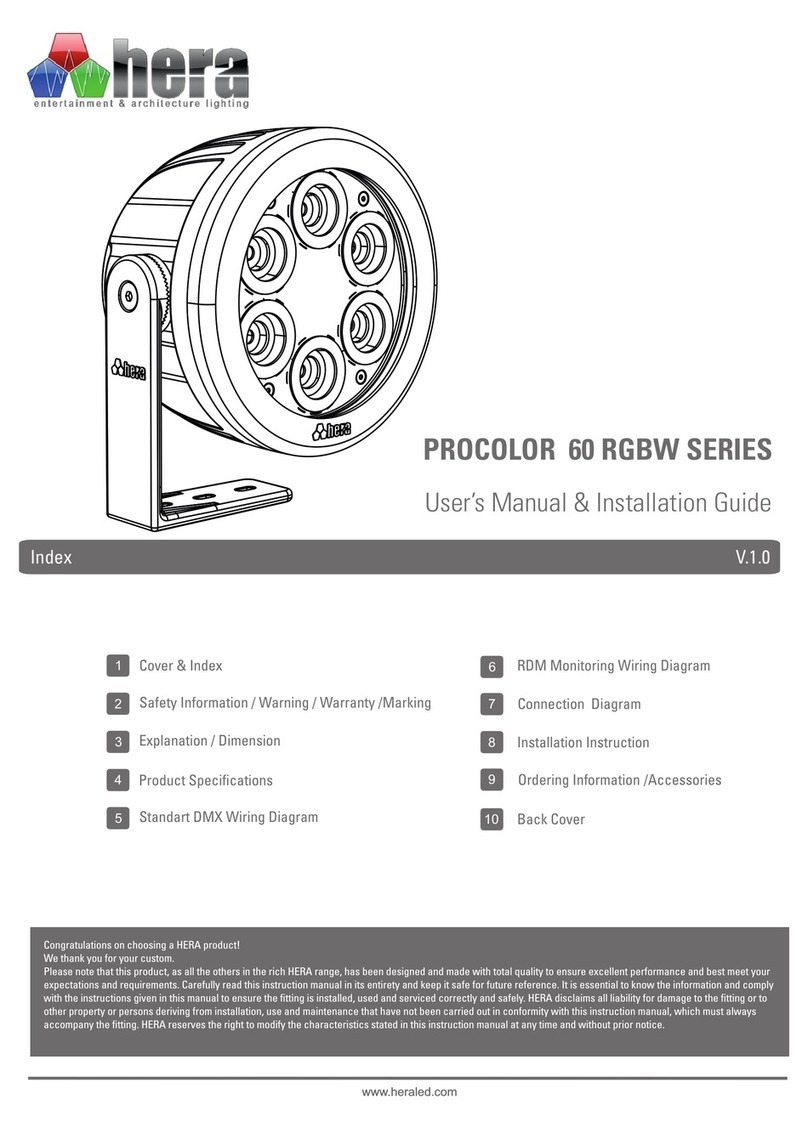4. LCD DISPLAY - Indicates all the functions,
as they are occurring, with the CD. These
functions are explained in the next section.
5. TRACK (Track Buttons) - Used to select
the track to be played.
6. Track 10 Button - This button is for
quickly advancing to higher tracks on a CD.
7. PROGRAM - Depress this button and the
unit will stop and the program indicator will
light. Select each track to be programmed
and press the PROGRAM button between
selections. You can program up to 30
tracks. Press PLAY to start the program.
To exit and erase program, either hold the
program button down for more than 2
seconds while the unit is stopped, open the
disc tray, or turn off the power.
8. PITCH (Pitch Button) - Activates the
Pitch Slider.
9. PITCH SLIDER - The pitch can be changed
up to +/-12% by pressing the PITCH
button so the PITCH LED is lit, then moving
the sliding fader. The pitch will not be
changed if the PITCH LED is off.
10. SEARCH WHEEL (OUTER RING) - 3
forward and 3 reverse speed positions for
searching through songs. The more you
turn the wheel in either direction the faster
you search through the music.
11. PITCH BEND/JOG WHEEL (INNER
RING) - The jog wheel serves 2 functions
depending on the current mode.
a) The jog wheel will control a slow
frame search when the CD is not
playing. To set a new frame cue
point, spin the wheel then press play
when you have determined the
proper position. Press CUE to return
to the “CUE POINT”.
b) When both CD players are playing a
CD, the pitch bend function allows
the positioning of the bass beats to
be matched after the pitch of each
disc is matched. Either player can
“catch up” or “fall back” to match the
other player. The jog wheel will
temporarily bend the pitch of the
music if the song is already playing
by rotating the wheel clockwise to
speed up or counterclockwise to slow
down. By changing the pitch of one
disc with respect to the pitch of the
other disc, the beats can be matched.
12. CUE - Pressing the CUE button during play
provides a return to the position at which
play was started. If PAUSE is used before
CUE, that will become the cue point.
Alternately pressing the PLAY button and
the CUE button allows the CD to be played
from the same position any number of
times. The CUE LED will light up from the
time the CUE button is pressed until the CD
has been reset to the position at which play
was started. Steady lighting of this LED
indicates the ready condition.
13. START/PAUSE (Play/Pause Button) -
Each press of the Play/Pause Button causes
the operation to change from play to pause
or from pause to play.
14. BPM/PITCH BUTTON - Switches the
mode of the display between showing the
BPM and the percentage change in pitch.
15. TAP BUTTON - Tap this button with the
beat of the music to determine the current
Beats Per Minute (BPM).
LCD DISPLAY FEATURES
1. PLAY: Active while the unit is actually playing a
CD.
2. PAUSE: Active when the unit is paused.
3. CUE: Flashing when the unit is setting a cue
point. Lit continuously when the unit is paused
at a cue point.
4. PROGRAM: Used for pre-programming the
track order to automatically be played by the
unit. This is a great function if you need to
leave the CD player alone.
5. TIME MODE: (Elapsed) is for showing time as it
is taking place.(Remain) shows how much time
is left on a particular track. This function is
controlled by the TIME BUTTON.
6. SINGLE: Shows when the unit is set to play
just one track at a time. When this is not lit, the
CD will play continuously through all tracks. This
function is controlled by the SING/CONT
BUTTON.
7. PITCH: Is lit when the PITCH BUTTON is
active.
8. TIME BAR: Shows either time remaining
or elapsed depending on the setting of the
TIME BUTTON.
9. PITCH/BPM: Shows the percentage
change in pitch or current BPM.
10. TRACK: Shows the current track that the
unit is playing.
11. MINUTES: Shows the minutes elapsed or
remaining depending on mode setting.
12. SECONDS: Shows the seconds elapsed or
remaining depending on mode setting.
13. FRAMES: The CD Player breaks down a
second into 75 frames for accurate cueing.
This shows the frames elapsed or
remaining depending on mode setting.
